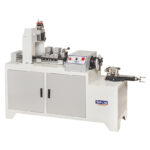When it comes to cable processing, precision and reliability are not just preferences—they are essential. Choosing the right cable stripper machine can significantly impact the quality, efficiency, and safety of your operations. Whether you are in manufacturing, electrical assembly, or maintenance, having the right equipment for stripping and slicing cables helps you avoid unnecessary waste, downtime, and rework. This article explores what professionals should consider before investing in a cable processing tool and how to make the most informed choice.
Understand the Application and Cable Type
Before selecting any cable stripper or slicing machine, it’s critical to assess the exact application it will serve. Cable types vary widely, from coaxial and multi-core cables to fiber optics and armored wires. Each of these cables requires a different level of precision, pressure, and blade configuration.
For example, a device intended for thin telephone wires may not perform well with high-voltage industrial cables. Misalignment between the tool and the cable type can result in insulation damage or poor stripping quality. Therefore, understanding the specific material, diameter, and insulation type of the cable you work with is the first and most important step in finding the right equipment.
Match the Machine Capacity with Your Production Volume
Production demand should influence the type of machine you choose. If your facility processes a high volume of cables daily, an automated cable slicer & stripping machine will offer significant time savings and consistency. On the other hand, low-volume or project-based operations might benefit more from a manual or semi-automatic cable stripper.
High-output environments need machines with features like programmable settings, quick-change tooling, and minimal cycle times. This reduces labor and helps maintain uniform results across large batches. Selecting a machine that aligns with your workload ensures you’re not underutilizing an advanced system or overworking a basic one.
Evaluate Blade Quality
The quality and flexibility of the blades are central to the effectiveness of any cable stripper. Look for machines equipped with durable, precision-ground blades that can be adjusted or replaced easily. The ability to fine-tune blade depth is particularly important for preventing insulation damage and preserving conductor integrity.
Some advanced models allow automatic blade positioning based on cable diameter, while others rely on manual calibration. One method may be better than another based on your team’s skill level and the cables’ variability. Never underestimate how much time and material you can save with a well-calibrated, sharp cutting system.
Consider Safety and Ergonomics
While output and precision are key, safety is non-negotiable. A good Cable Slicer & Stripping Machine should have built-in safety features such as blade guards, emergency stop functions, and overload protection. Especially in environments where multiple operators may use the machine, safety becomes a collective responsibility.
Ergonomics is another often-overlooked factor. Machines that require minimal manual effort, have user-friendly controls, and support comfortable working postures contribute to better efficiency and fewer operator injuries. Whether it’s a handheld cable stripper or a benchtop slicing unit, ease of use can greatly influence overall productivity.
Assess Compatibility with Your Workflow
No matter how advanced a tool is, it must integrate smoothly into your existing process. Consider how the machine handles inputs and outputs, what kind of setup time it requires, and whether it supports any automation protocols used in your facility.
For example, if your line is already partially automated, look for a Cable Slicer & Stripping Machine that supports PLC integration or has remote operation capabilities. Machines with modular designs or expandable features can also grow with your operations instead of becoming obsolete in a few years.
Check After-Sales Support
Even the most reliable machines require occasional maintenance or part replacements. When evaluating a cable stripper, inquire about service plans, warranty terms, and the availability of spare parts. A supplier with a responsive support team and easily accessible parts can save you significant downtime in the long run.
When there is a lot of demand, even a short delay in getting a new blade or sensor can stop work. To get your team up to speed quickly, give more weight to vendors who have a good reputation for technical support, documentation, and training materials.
Long-Term ROI with Cable Slicer & Stripping Machine
While initial cost is a factor, it should never be the only one. A high-quality Cable Slicer & Stripping Machine may cost more upfront but can yield long-term returns through reduced labor costs, fewer errors, and greater consistency. Consider machines that offer features like multi-layer stripping, memory settings for different cable types, and fast cycle times.
Picking the right equipment for processing cables is more than just a matter of buying it. It’s an investment in the accuracy, safety, and speed of your work. You can find a cable stripper or Cable Slicer & Stripping Machine that works for your team and grows with your business by carefully considering your application needs, production needs, and operational goals. The right tool can do more than just cut wires. It makes your whole operation better.

